Peter A. Gloor
Plant Bioelectric Early Warning Systems: A Five-Year Investigation into Human-Plant Electromagnetic Communication
Jun 04, 2025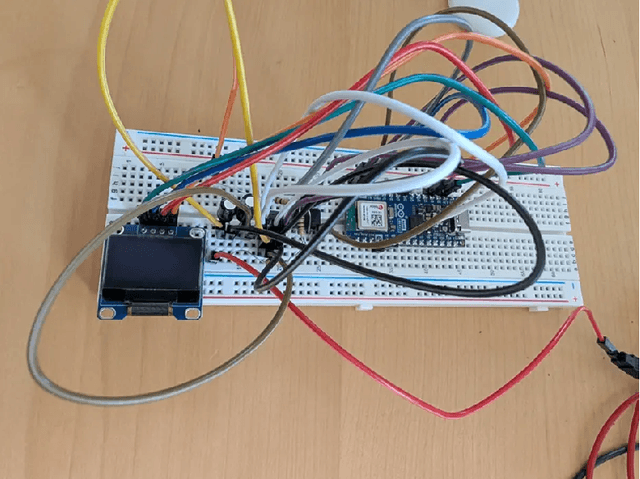
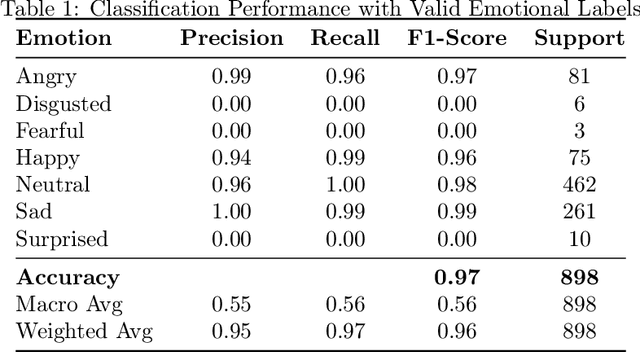
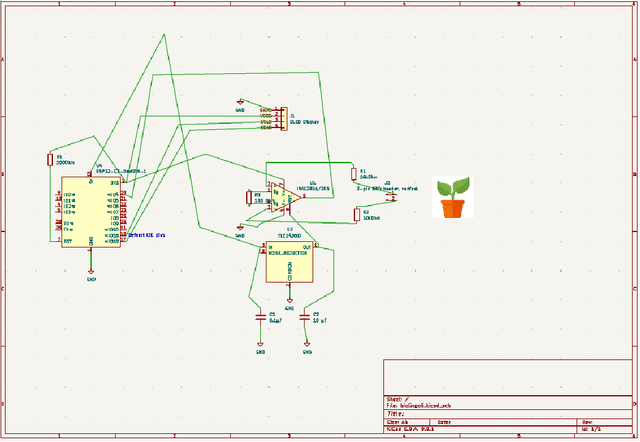
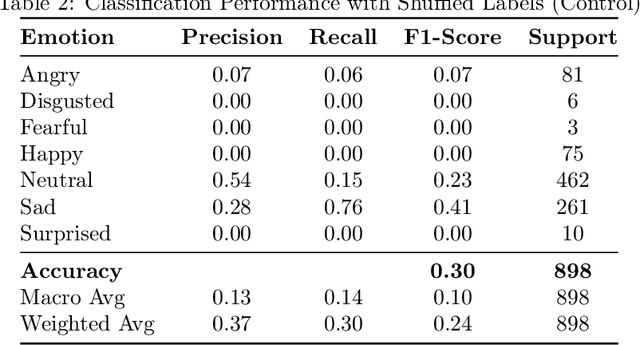
Abstract:We present a comprehensive investigation into plant bioelectric responses to human presence and emotional states, building on five years of systematic research. Using custom-built plant sensors and machine learning classification, we demonstrate that plants generate distinct bioelectric signals correlating with human proximity, emotional states, and physiological conditions. A deep learning model based on ResNet50 architecture achieved 97% accuracy in classifying human emotional states through plant voltage spectrograms, while control models with shuffled labels achieved only 30% accuracy. This study synthesizes findings from multiple experiments spanning 2020-2025, including individual recognition (66% accuracy), eurythmic gesture detection, stress prediction, and responses to human voice and movement. We propose that these phenomena represent evolved anti-herbivory early warning systems, where plants detect approaching animals through bioelectric field changes before physical contact. Our results challenge conventional understanding of plant sensory capabilities and suggest practical applications in agriculture, healthcare, and human-plant interaction research.
Emotion Recognition in Horses with Convolutional Neural Networks
May 25, 2021
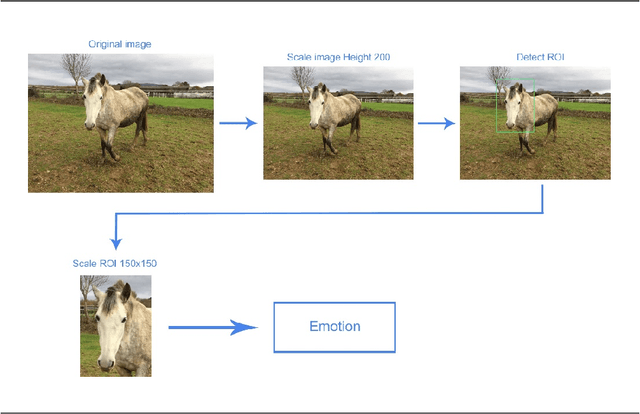


Abstract:Creating intelligent systems capable of recognizing emotions is a difficult task, especially when looking at emotions in animals. This paper describes the process of designing a "proof of concept" system to recognize emotions in horses. This system is formed by two elements, a detector and a model. The detector is a faster region-based convolutional neural network that detects horses in an image. The second one, the model, is a convolutional neural network that predicts the emotion of those horses. These two models were trained with multiple images of horses until they achieved high accuracy in their tasks, creating therefore the desired system. 400 images of horses were used to train both the detector and the model while 80 were used to validate the system. Once the two components were validated they were combined into a testable system that would detect equine emotions based on established behavioral ethograms indicating emotional affect through head, neck, ear, muzzle, and eye position. The system showed an accuracy of between 69% and 74% on the validation set, demonstrating that it is possible to predict emotions in animals using autonomous intelligent systems. It is a first "proof of concept" approach that can be enhanced in many ways. Such a system has multiple applications including further studies in the growing field of animal emotions as well as in the veterinary field to determine the physical welfare of horses or other livestock.
What Makes a Message Persuasive? Identifying Adaptations Towards Persuasiveness in Nine Exploratory Case Studies
Apr 26, 2021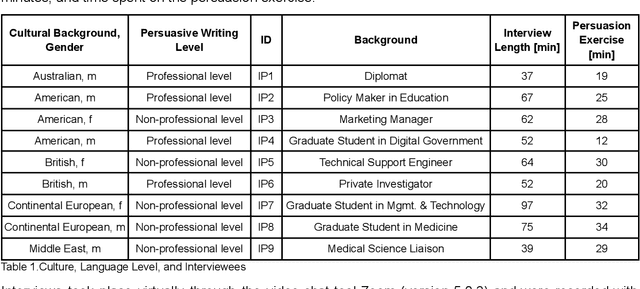
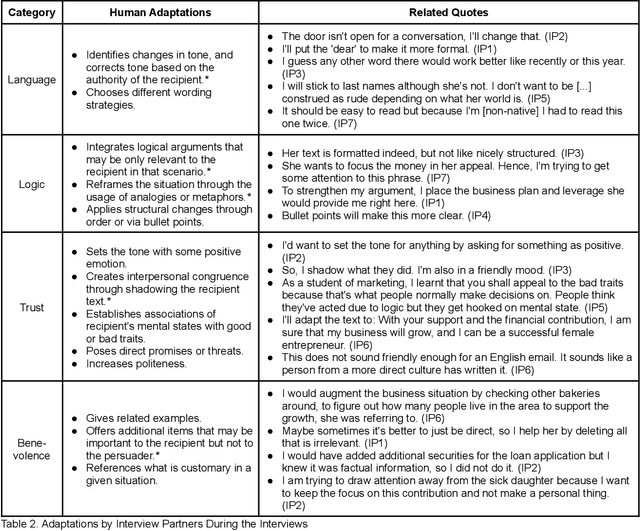
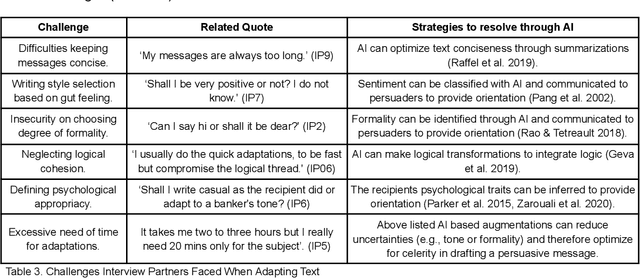
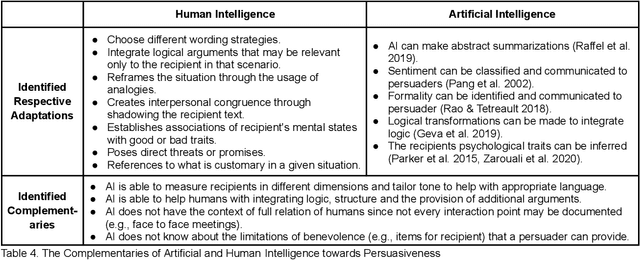
Abstract:The ability to persuade others is critical to professional and personal success. However, crafting persuasive messages is demanding and poses various challenges. We conducted nine exploratory case studies to identify adaptations that professional and non-professional writers make in written scenarios to increase their subjective persuasiveness. Furthermore, we identified challenges that those writers faced and identified strategies to resolve them with persuasive natural language generation, i.e., artificial intelligence. Our findings show that humans can achieve high degrees of persuasiveness (more so for professional-level writers), and artificial intelligence can complement them to achieve increased celerity and alignment in the process.
Persuasive Natural Language Generation -- A Literature Review
Jan 14, 2021
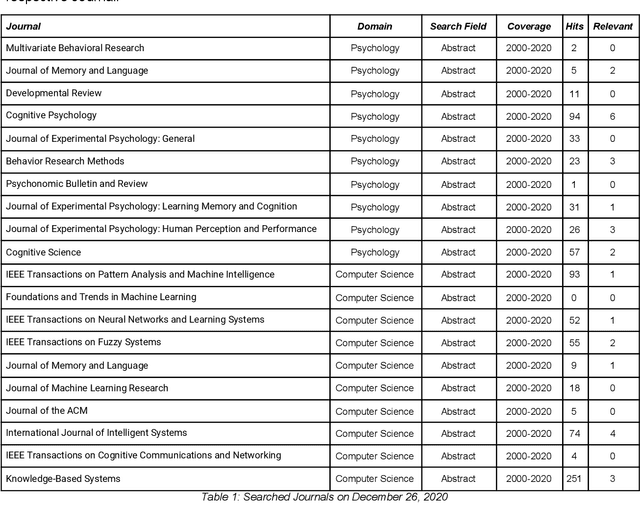
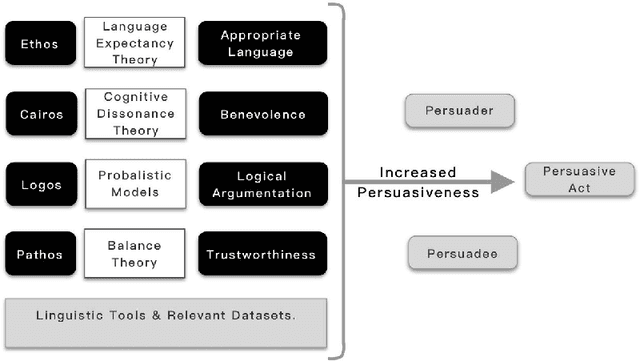
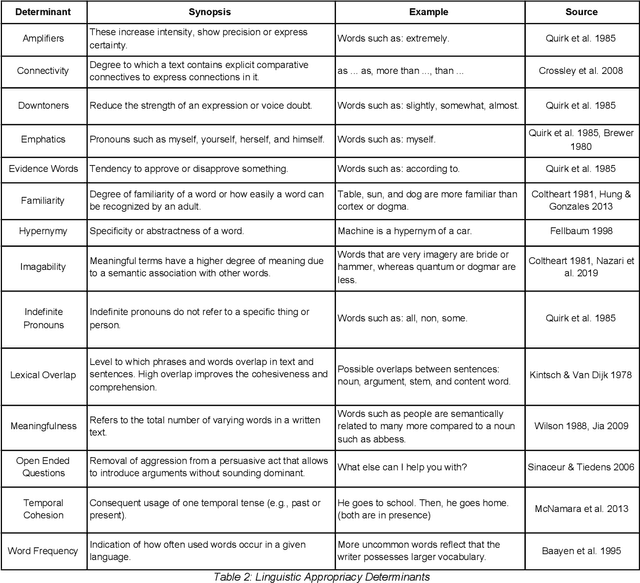
Abstract:This literature review focuses on the use of Natural Language Generation (NLG) to automatically detect and generate persuasive texts. Extending previous research on automatic identification of persuasion in text, we concentrate on generative aspects through conceptualizing determinants of persuasion in five business-focused categories: benevolence, linguistic appropriacy, logical argumentation, trustworthiness, tools and datasets. These allow NLG to increase an existing message's persuasiveness. Previous research illustrates key aspects in each of the above mentioned five categories. A research agenda to further study persuasive NLG is developed. The review includes analysis of seventy-seven articles, outlining the existing body of knowledge and showing the steady progress in this research field.
Eurythmic Dancing with Plants -- Measuring Plant Response to Human Body Movement in an Anthroposophic Environment
Dec 23, 2020Abstract:This paper describes three experiments measuring interaction of humans with garden plants. In particular, body movement of a human conducting eurythmic dances near the plants (beetroots, tomatoes, lettuce) is correlated with the action potential measured by a plant SpikerBox, a device measuring the electrical activity of plants, and the leaf movement of the plant, tracked with a camera. The first experiment shows that our measurement system captures external stimuli identically for different plants, validating the measurement system. The second experiment illustrates that the plants' response is correlated to the movements of the dancer. The third experiment indicates that plants that have been exposed for multiple weeks to eurythmic dancing might respond differently to plants which are exposed for the first time to eurythmic dancing.
 Add to Chrome
Add to Chrome Add to Firefox
Add to Firefox Add to Edge
Add to Edge